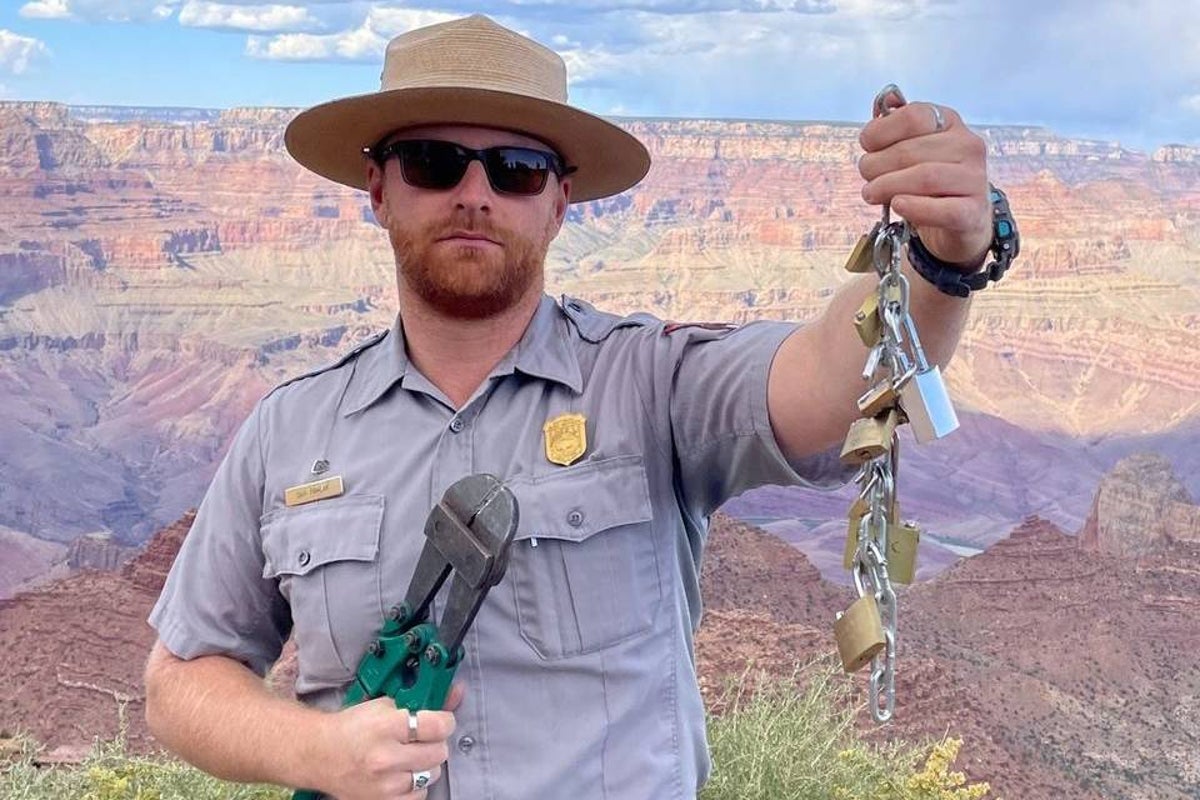
The Grand Canyon National Park has urged visitors to stop leaving “love locks” that are endangering wildlife such as condors.
“Love is strong, but it is not as strong as our bolt cutters,” the park posted on social media.
“Padlocks left behind on fencing are called Love Locks. People think putting a lock on fencing at viewpoints is a great way to show love for another person. It’s not.”
Love locks have become popular in cities like Paris with couples leaving the closed lock on fences and bridges and throwing the key into a nearby body of water.
“Leaving padlocks like this is littering and a form of graffiti. But because people will throw their padlock key into the canyon the scenario becomes worse and more dangerous specifically for a rare and endangered animal of the canyon,” park officials added.
“They will spot a coin, a wrapper or a shiny piece of metal, like a key from a padlock that has been tossed into the canyon and eat it. Condors are not meant to digest metal and many times cannot pass these objects.”
The post included an X-ray image of a condor which showed “coins lodged in the digestive tract” of the giant raptor.
The Grand Canyon National Park has urged visitors to stop leaving 'love locks’ that are endangering wildlife such as condors— (NPS Photos / D Pawlak)
“This bird had to be operated on to clear the obstructions. If a condor ingests too many objects like this, it could die.”
California condors are one of the most endangered bird species in the world and were placed on the federal endangered species list in 1967.
The Grand Canyon National Park has urged visitors to stop leaving 'love locks’ that are endangering wildlife such as condors— (NPS Photos / D Pawlak)
As of December 2022, there was a wild population of just 347 birds, spread between California, Arizona, Utah and Baja.







